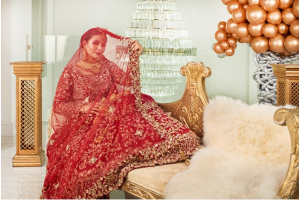The History and Evolution of Shalwar Kameez: Exploring its Cultural Significance
The shalwar kameez is a traditional outfit that holds deep cultural significance in South Asia. It's a beautiful ensemble consisting of a loose tunic called a kameez, worn over baggy pants known as shalwar. This attire has a long history and has evolved over time, reflecting the diverse cultures and traditions of the region. In this blog post, let's explore the fascinating journey of the shalwar kameez and understand its cultural importance.
The origins of the shalwar kameez can be traced back to ancient Mesopotamia, where similar loose-fitting garments were worn. Over the centuries, this clothing style made its way to the Indian subcontinent and became an integral part of the local culture. However, it was during the Mughal Empire, from the 16th to the 18th centuries, that the shalwar kameez gained prominence and underwent significant transformations.
The Mughals, known for their refined taste and love for luxury, greatly influenced the fashion of the region. During their rule, the shalwar kameez evolved in terms of design, fabric, and embellishments. The kameez became more fitted and adorned with intricate embroidery, mirror work, and other decorative elements, showcasing the grandeur of the Mughal court.
The shalwar also saw variations like the patiala shalwar with its pleats and volume, and the churidar, a tight-fitting trouser that gathers at the ankle. The British colonial period in India, lasting from the 18th to the mid-20th century, brought further changes to the shalwar kameez. Western influences seeped into the local fashion scene, and the traditional attire was modified to suit the tastes of the British rulers.
The kameez became longer and more modest, and the fabric shifted from luxurious silks to more affordable cotton. These changes were influenced by practicality and comfort, as well as Victorian fashion trends. After India gained independence from British rule in 1947, there was a renewed interest in promoting indigenous arts and crafts, including traditional clothing.
The shalwar kameez experienced a resurgence in popularity, with various regional styles emerging across different parts of India and Pakistan. Each region developed its own unique variations in terms of silhouette, fabric, and embroidery techniques. For instance, the Anarkali style with its flared kameez originated in Punjab, while the Lucknowi style, famous for delicate Chikankari embroidery, hails from Lucknow.
Today, the shalwar kameez is not just a traditional outfit, but also a symbol of cultural identity and pride. It is worn on special occasions like weddings, festivals, and religious ceremonies, as well as in everyday life. People of all ages and backgrounds appreciate the versatility and adaptability of the shalwar kameez, which transcends regional and religious boundaries.
The cultural significance of the shalwar kameez goes beyond its aesthetic appeal. It represents the rich heritage and diversity of South Asian culture, serving as a tangible connection to the past. The attire embodies modesty and reflects traditional values and customs. Moreover, the shalwar kameez has gained international recognition, with many fashion designers incorporating its elements into their collections, showcasing its universal appeal.
 blog
blog 











